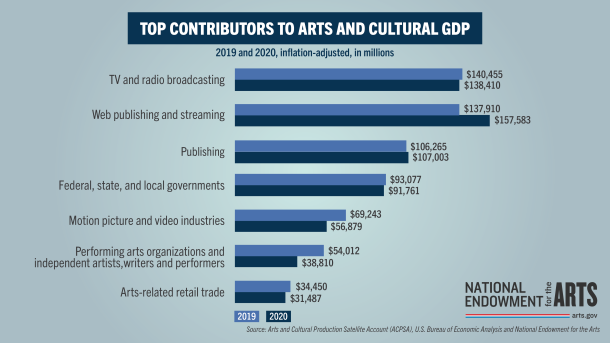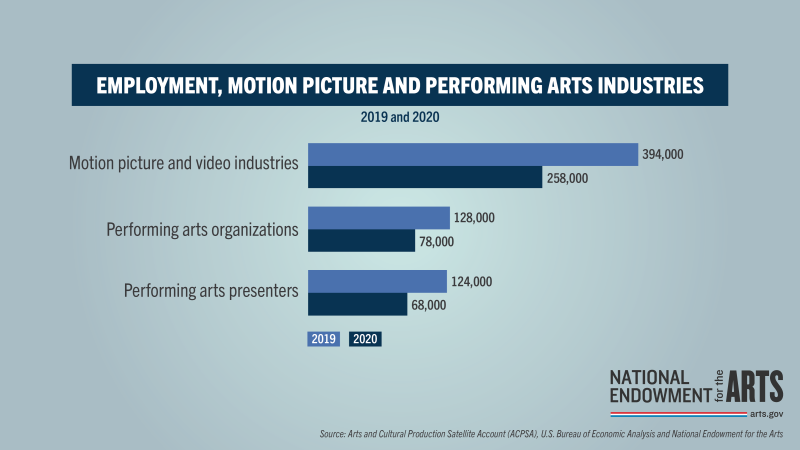WASHINGTON, D.C.: The National Endowment for the Arts (NEA) and the Bureau of Economic Analysis (BEA) have released data from the Arts and Cultural Production Satellite Account (ACPSA), which studies the annual economic impact of arts and cultural production from 35 commercial and nonprofit industries.
On the national level, arts and culture added $876.7 billion, or 4.2 percent to the U.S.’s gross domestic product in 2020. Between 2019 and 2020, arts and cultural production fell by 6.4 percent, nearly twice the rate of the overall economy. The contributions of performing arts presenters and festivals fell by nearly 73 percent. Meanwhile the GDP contributions made by web publishing and streaming increased by 14.3 percent, a growth of 12,000 salaried workers.

In terms of employment, the arts economy lost half a million jobs (604,000 workers) between 2019 and 2020, not including self-employed artists. Forty percent of this decline occurred across motion picture and video production, performing arts presenting, and performing arts companies, with the highest employment losses affecting motion picture and video production: a cost of 136,000 workers.

The 2021 data indicate some progress. The overall unemployment rate for artists decreased in 2021 from 10.3 percent to 7.2 percent. The arts unemployment rate in 2019 was 3.7 percent. Performing arts companies earned double the revenue in the third quarter of 2021 than in 2020, from $834 million to $1.7 billion. Though the third quarter revenue in 2019 was $12.7 billion.
State-level data and interactive infographics are available on the Arts Data Profile. The BEA has produced ACPSA factsheets for each state and the National Assembly of State Arts Agencies and the NEA have created an interactive dashboard organized by state.
The National Endowment for the Arts is an independent federal agency established by Congress in 1965 for the purpose of funding and supporting arts access and opportunities in America.


